I'm a pretty good photographer. I hate it.
On photography, algorithms, and the promise of fame on early social media
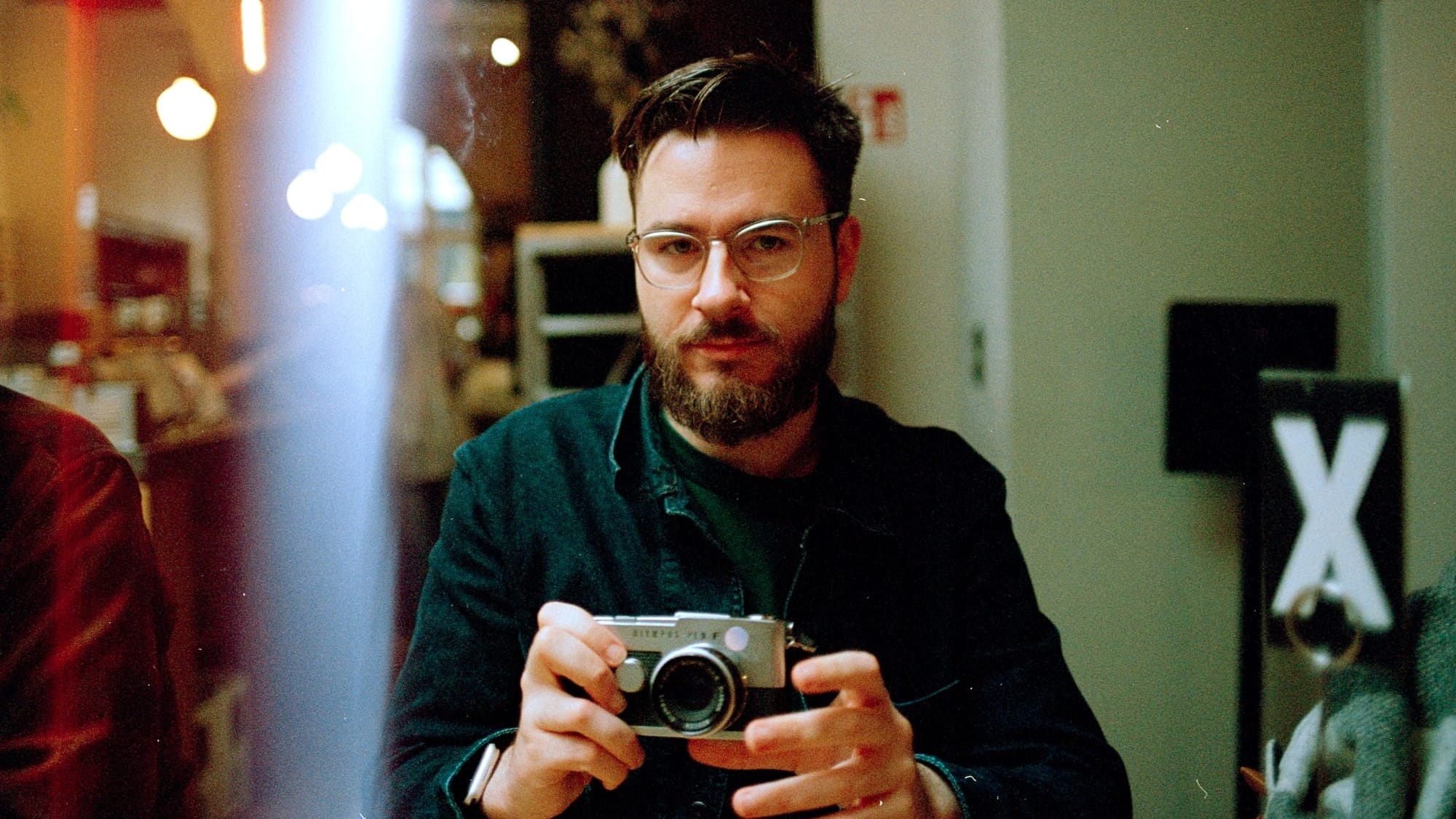
On photography, algorithms, and the promise of fame on early social media
As an underemployed college dropout (soon to be an overemployed college dropout with burnout), I bought my first "proper" camera. It was a Russian SLR from the eighties, made of military-grade steel. And it worked great.
I had always been interested in photography and, as a kid, almost got to learn how to work in a darkroom. But suddenly, I wasn’t a kid anymore. It was around 2008, and digital was all the rage... and I couldn't afford it. So I decided to learn the basics using a cheaper medium, and film was, imagine that, a cheaper medium back then.
Soon, I started getting hand-me-downs, as baby boomers in my area were finding their old cameras in attics and boxes and getting rid of them. One of my bosses gave me a trash bag full of his old gear. Development was affordable. And soon, I started cranking out photos I was happy with.
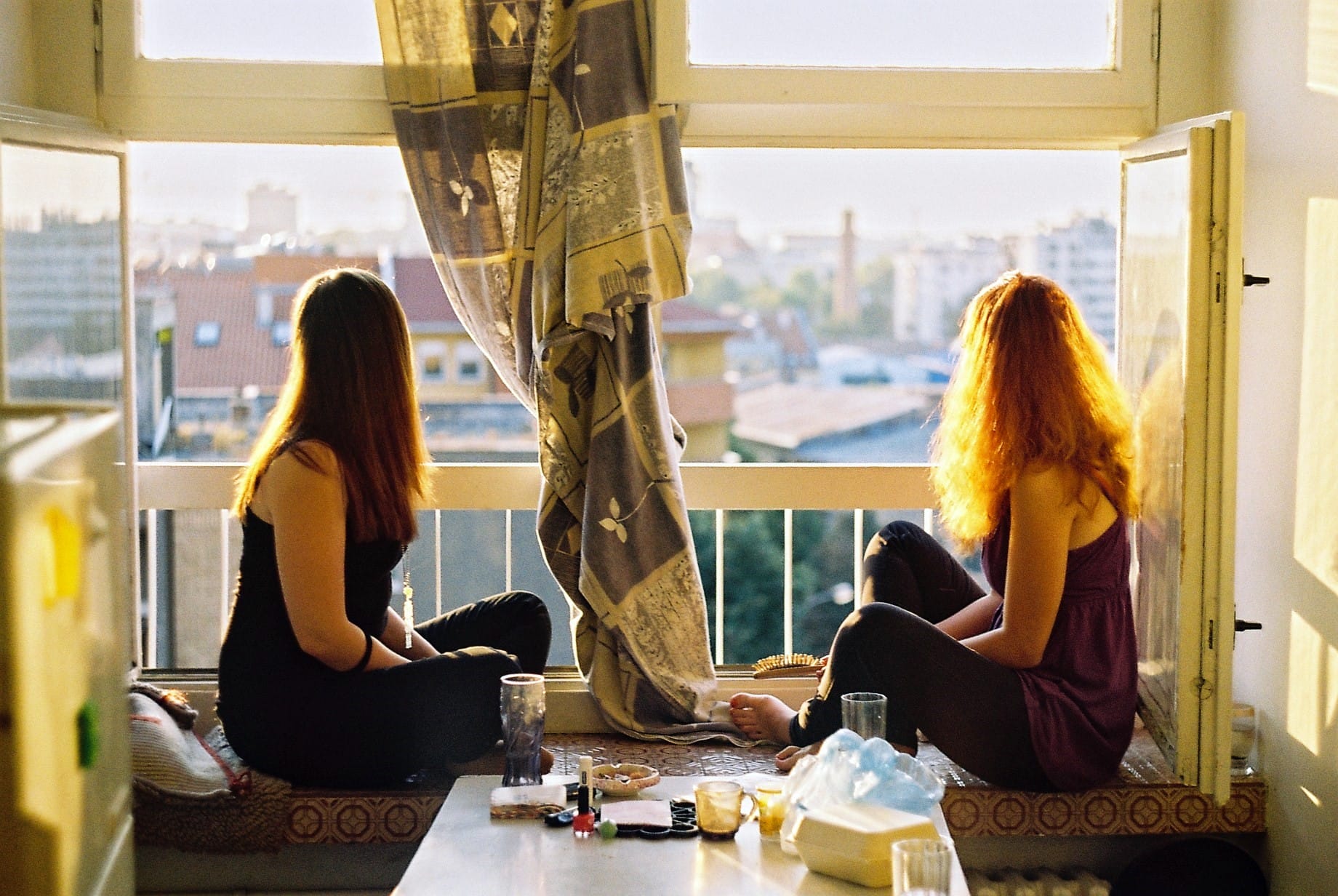
I had a career in broadcasting, where my work weeks unfolded in cramped spaces surrounded by a whirlwind of people and screens. Photography was a hobby that made me go outside more.
I soon wanted to pursue photography more seriously. So, it was time to digitize! In 2012, I got my first DSLR. It had probably been stolen. It was also four years old, producing worse results than any of my film gear. I shot a couple of events here and there. I worked as a photojournalist for a news website, though poorly: there was barely a budget for proper reporting, let alone news photography. But everything was going swell—I even had a photo hanging at an exhibition once!
Then I decided to move countries. I sold all my photo gear and switched to Fuji - my future was full of plane rides, and I needed something small and portable.
And then, I tried to make photography my full-time job.
When I moved to the Netherlands, I felt a bit lost—I was a broadcast media professional who didn’t speak Dutch, which tends to severely limit your chances of remaining a broadcast media professional in a country where media companies tend to produce content in, well, Dutch.
But this was my chance to embrace photography and turn it into a career!
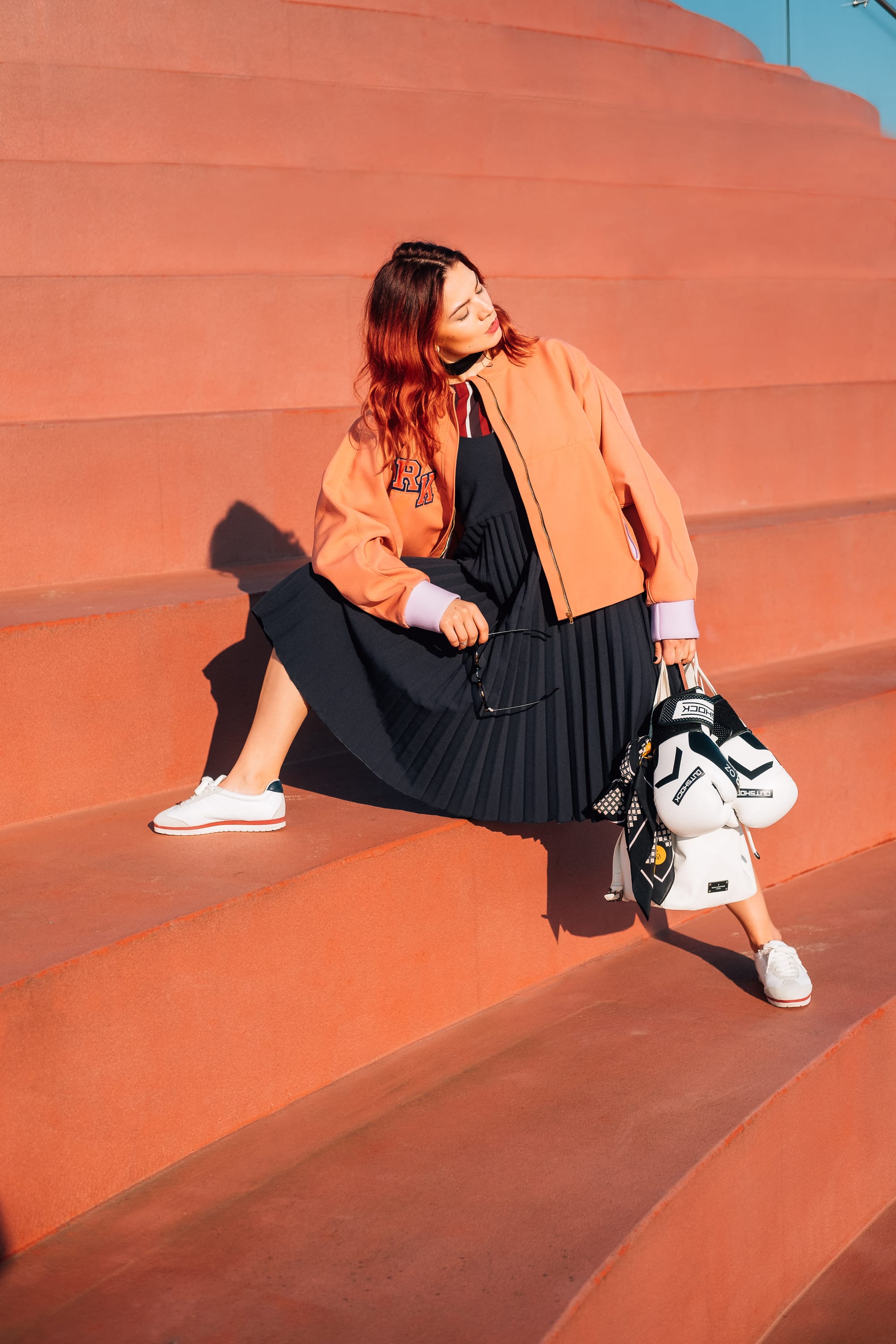
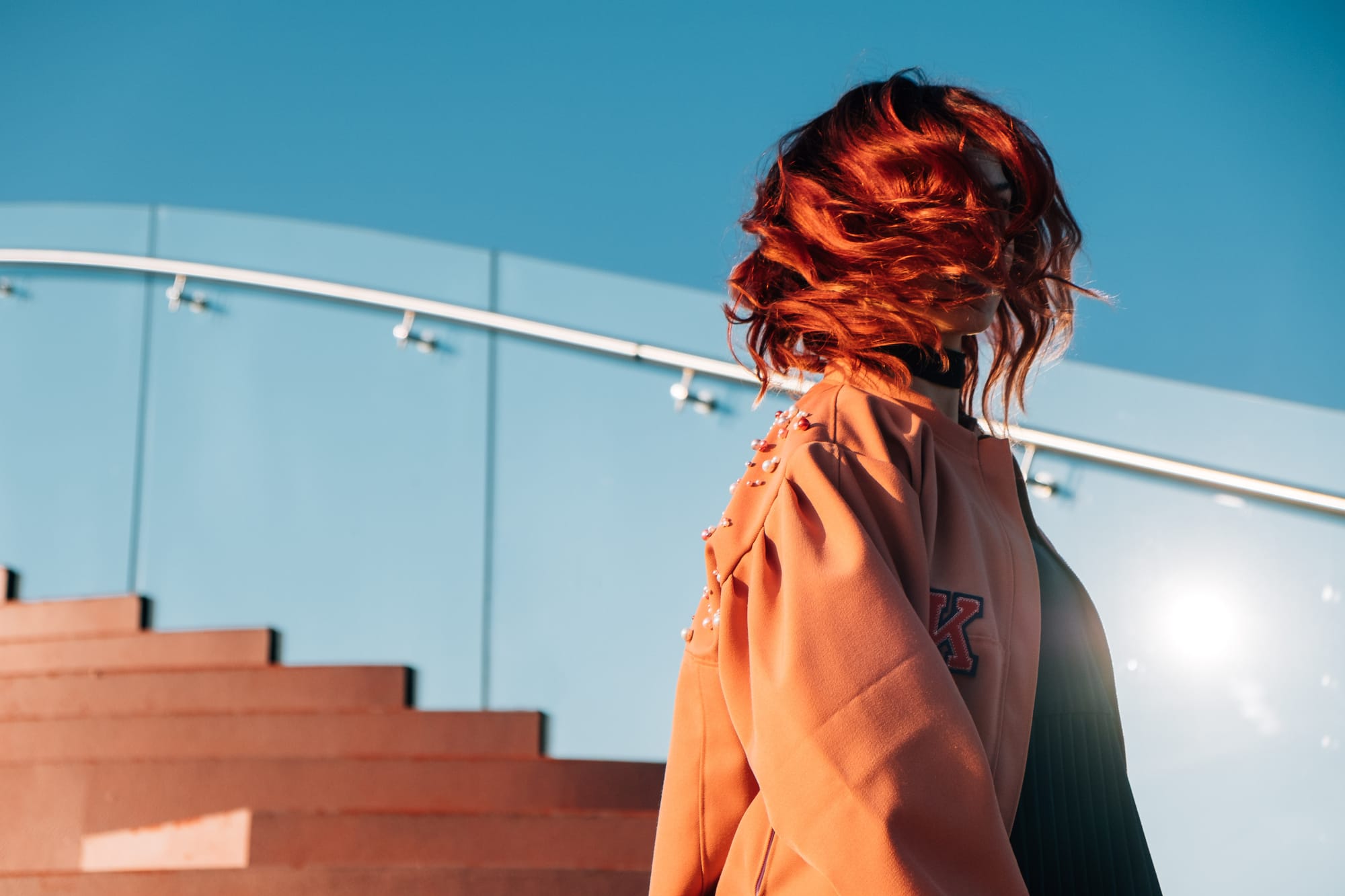
Photos from a shoot for TheModeCode in 2017; stylist and model: Rebeka Kadlicsek
I started shooting editorials for a fashion blog. Then, I landed an overseas client who wanted street-style photos of their T-shirts and other miscellanea. They asked me to stage random sample shots using whatever I could find around my house. I did—and they hated everything I found around my house. Eventually, they sent me their shirts but simultaneously changed their mind: they now needed studio shots for their online store. Instead of saying no, I bought some studio gear. The results were awful. We never worked together again.
But slowly, things picked up. Sitting in a control room for an English-language show on a local public access TV channel, I met an American photographer who organized photography workshops. Soon, I started working for her. Teaching photography was exceptionally rewarding!
By that time, I had started to establish myself. I was active on Instagram and regularly attended Instameets. I applied to one of those websites that connect photographers to travelers looking for something more than selfies. I signed up with an agency where brands, like hotels, would pay you a thousand dollars to shoot content for their Instagram stories. When Airbnb Experiences first launched, I offered photo walks (part photo shoots, part workshops, part guided tours) through the platform. I also shot portraits, engagements, small weddings, and events.
So until Covid, my photography career was like a mixtape. Eclectic and all over the place, but mostly rewarding.
In the meantime, Instagram ruined everything. But first, it made it better.
Instagram launched in 2010. As an Android user at the time, I only got it in the summer of 2012, after Facebook acquired it.
It was fascinating!
There was something insanely captivating about seeing people's photos in real time. It was a fantastic tool to share the scenes from your travels as they unfolded! My phone camera was pretty crappy, even crappier than, by today's standards, the already crappy iPhone camera.
But the crumminess was kind of a feature, not a bug. Around that time, VSCO launched. It was originally an app made to promote Lightroom presets for wedding photographers. But it took off and started having a life of its own. It turned out, you only needed to take the digital edge off of the crappy phone photos and they no longer looked digitally crappy. And analog crappiness is eye-pleasing and nostalgic.
Somebody soon realized they could take photos with their digital camera, edit them on a computer, transfer them to their phone, and then post them on Instagram. Not long after, Instagram stopped being real-time. In 2016, the app introduced an algorithmic feed instead of the chronological one. Nothing was chronological anymore, anyway! Except for stories, which launched at the same time.
I started offering Instagram account management in addition to my photography services. In a time when feature accounts were all the rage, I grew an Amsterdam-focused feature account to 80k followers! I also worked with small fashion, beauty, and lifestyle brands, and even a local yoga studio.
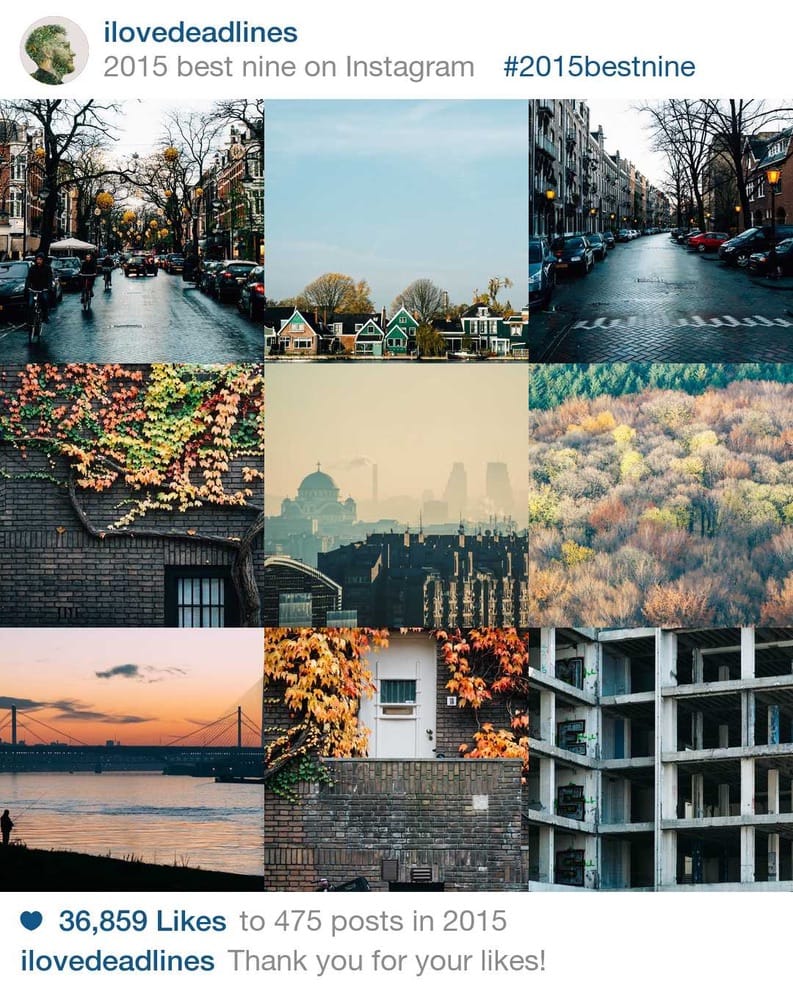
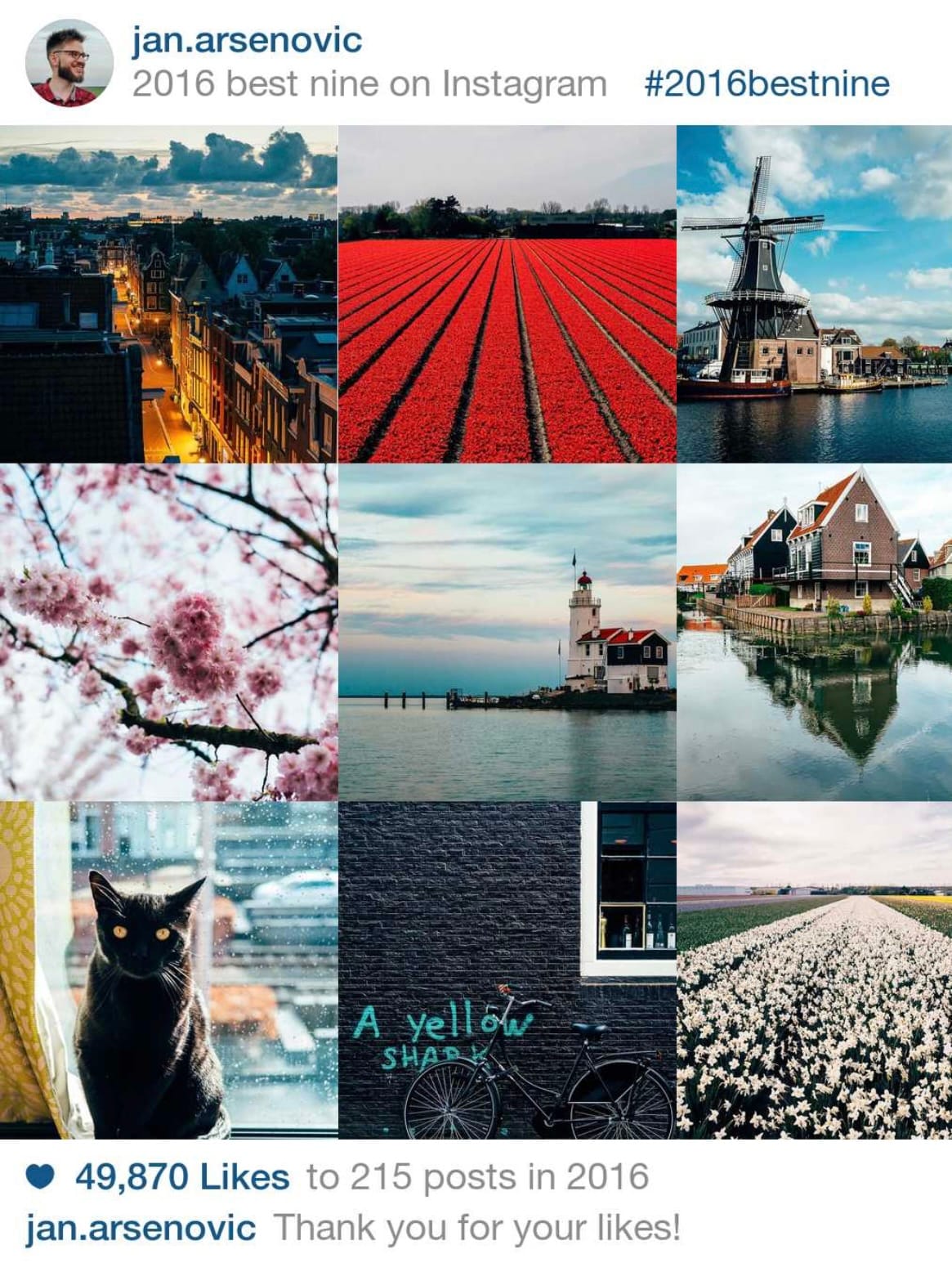
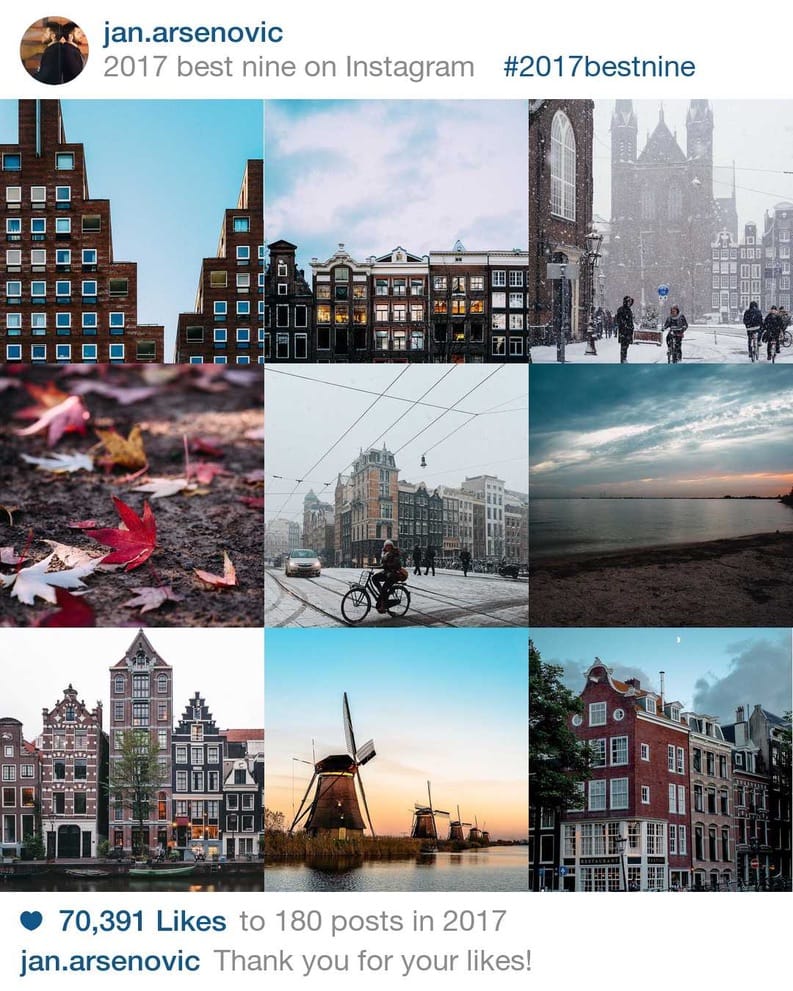
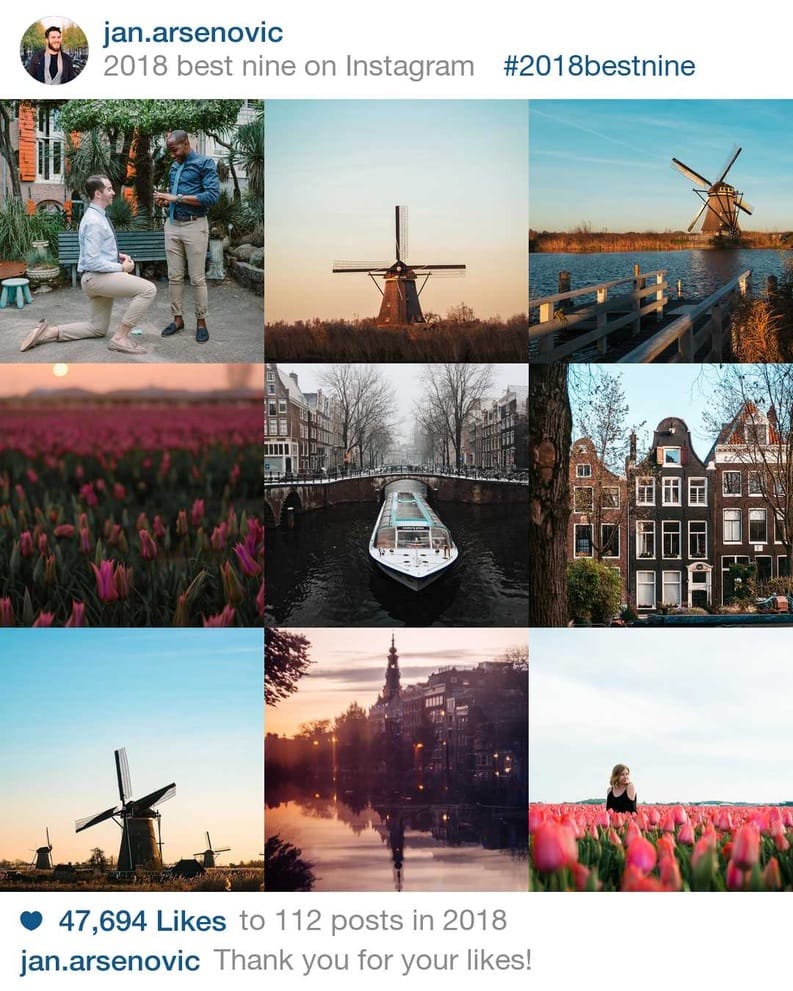
My Instagram profile never reached some of my clients' follower counts. At first, having a place to upload my photography motivated me: posting photos on Instagram was a reason to go out and shoot. However, as I went deeper into the analytics, I saw that people only interacted with one kind of my posts: photographs of Amsterdam. And I can't blame them. Amsterdam is one of the most aspirational travel destinations. Its canal ring is a UNESCO heritage site. And I had also followed a bunch of Amsterdam-based Instagrammers after traveling there several years prior.
With the algorithmic feed, it was enough for one of your Instagram posts to start doing mildly better for the algorithm to pick it up and make it do a lot better. On my clients' accounts, I would leverage this by sandwiching a post I'd expect less engagement on between two higher-performing ones. And it worked! On my own profile, I alternated between portraits and photos of Amsterdam's canals.
The problem was, I lived in Amsterdam now, and photographing its canals just wasn't exciting anymore. I could see them every day! I tried switching up my subjects, but those photos always flopped.
The photographer's dream was dead.
Over time, I got pretty good at predicting which photos would perform well and which ones wouldn’t. Great, right? Wrong. It just meant I’d travel somewhere, take hundreds of shots, then only edit one or two I thought were worthy of becoming content. The rest? Banished to external hard drive purgatory, waiting for a someday that almost never came.
In the early days of Instagram, it was a platform where photographers could get their big break. You could suddenly get discovered by brands, agencies, and magazines, just from your Instagram feed. If you had enough followers, you could also launch courses or have them follow you to another platform. Even some established photographers have used the platform to extend their reach and launch their dream projects.
And... That was, kind of, what I wanted to do. But the problem was that it wasn't Instagram's early days anymore. The first Instameet I attended in Amsterdam gathered around fifty people. The last one I've been to had around 150 attendees. Even my cats were on the platform. Everybody was trying to make it, and there was still a lot of work, but not enough to go around. Photography was becoming commodified, and if you weren't big, you often had to sell yourself short.
I planned to play the game, grow my follower count, and pivot. Back then, you couldn't post links to your stories without at least 10k followers. I then planned to funnel them to my blog, YouTube channel, or anywhere.
At around the 10k mark, I posted a couple of photos from a surprise gay engagement I photographed in Amsterdam. The images were great! And I have finally inched toward telling the stories I wanted to tell. And I immediately found myself having to delete hate comments and block people. I was so confused! After all, I am queer - how come you can follow me online and not clock that?!
Somewhere in working the algorithm, my personal brand had become less personal. I blocked and removed around three thousand followers, and never tried to grow my follower count again.
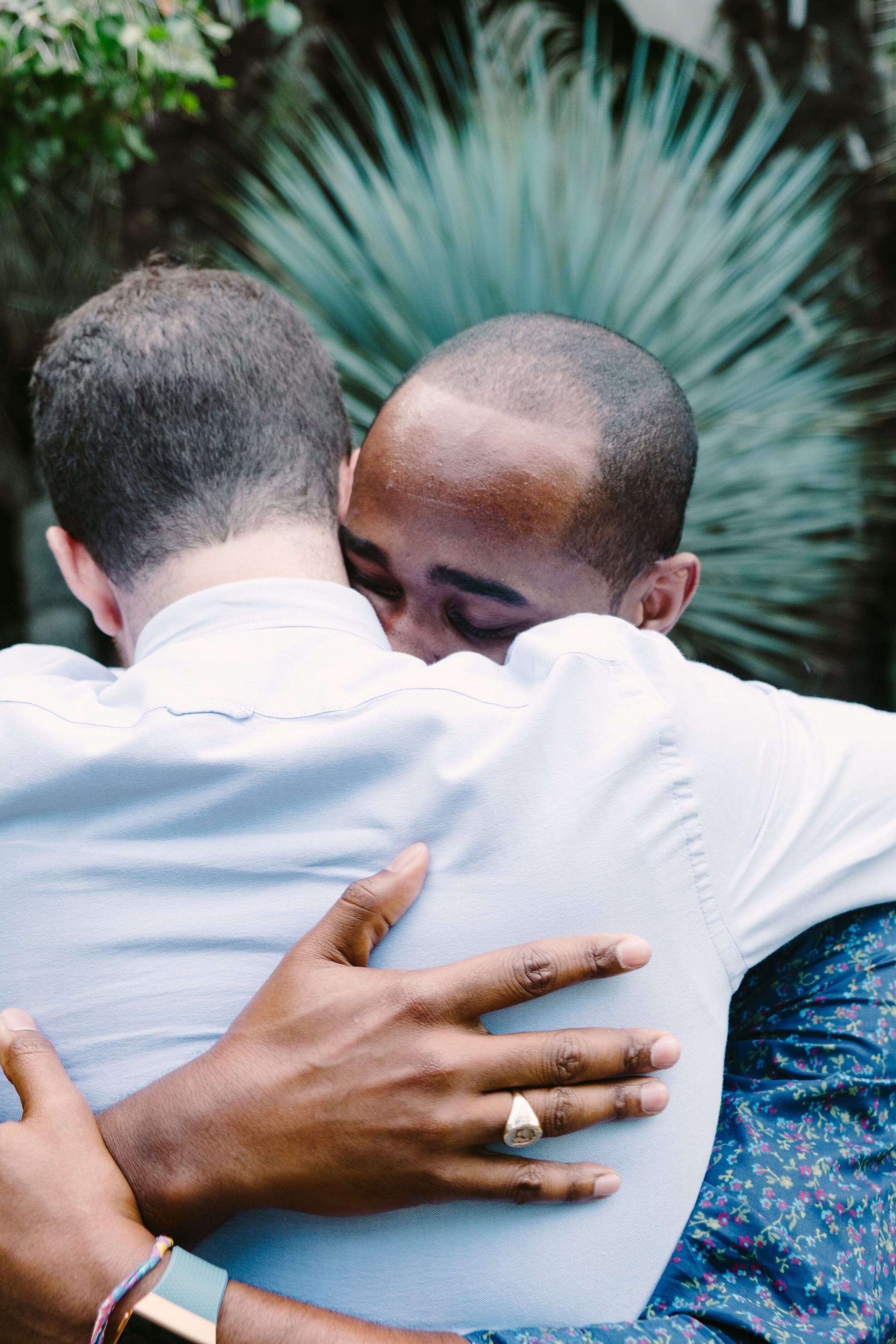
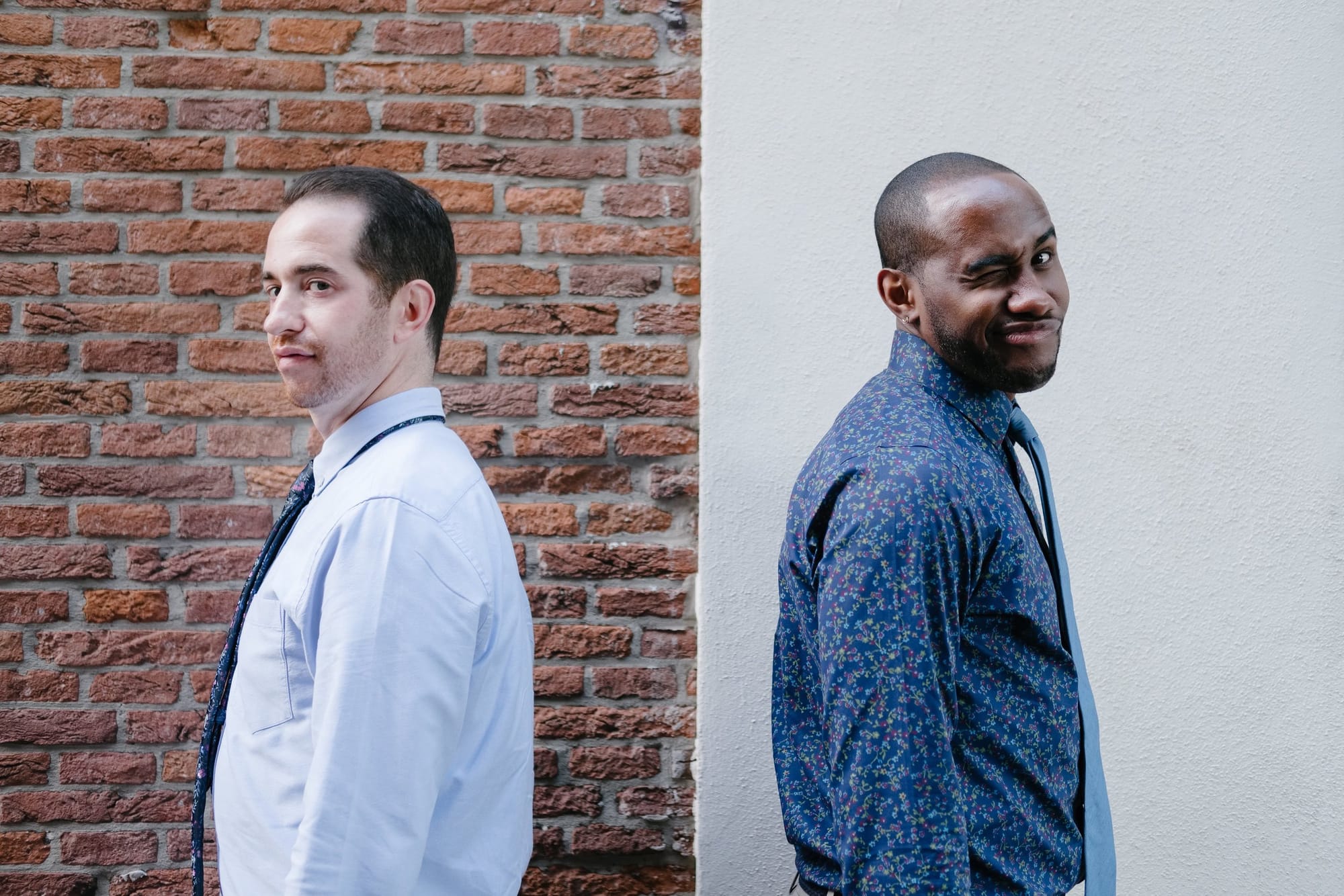
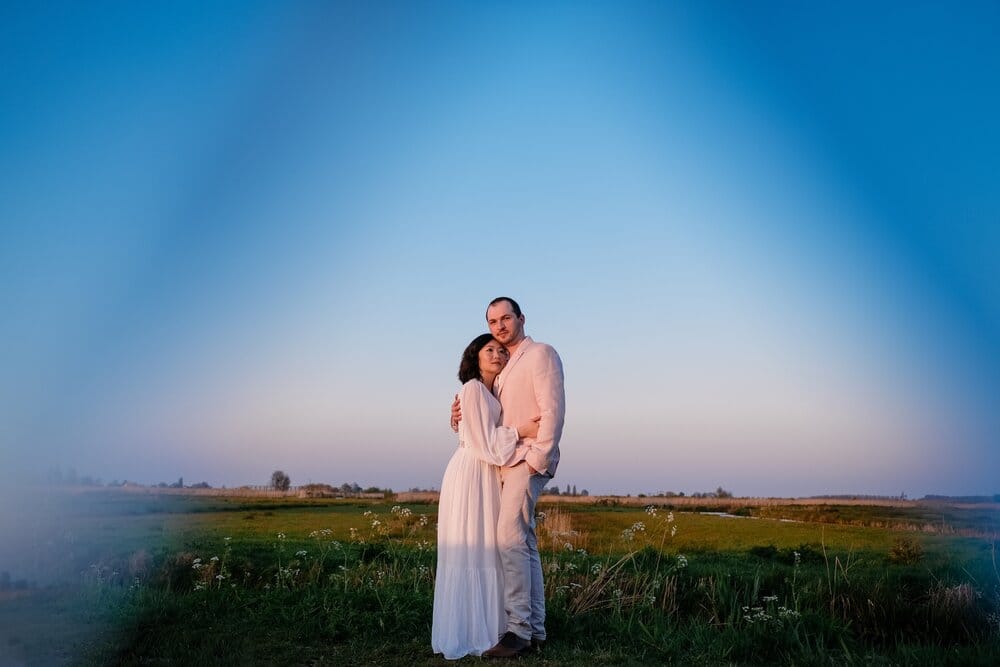
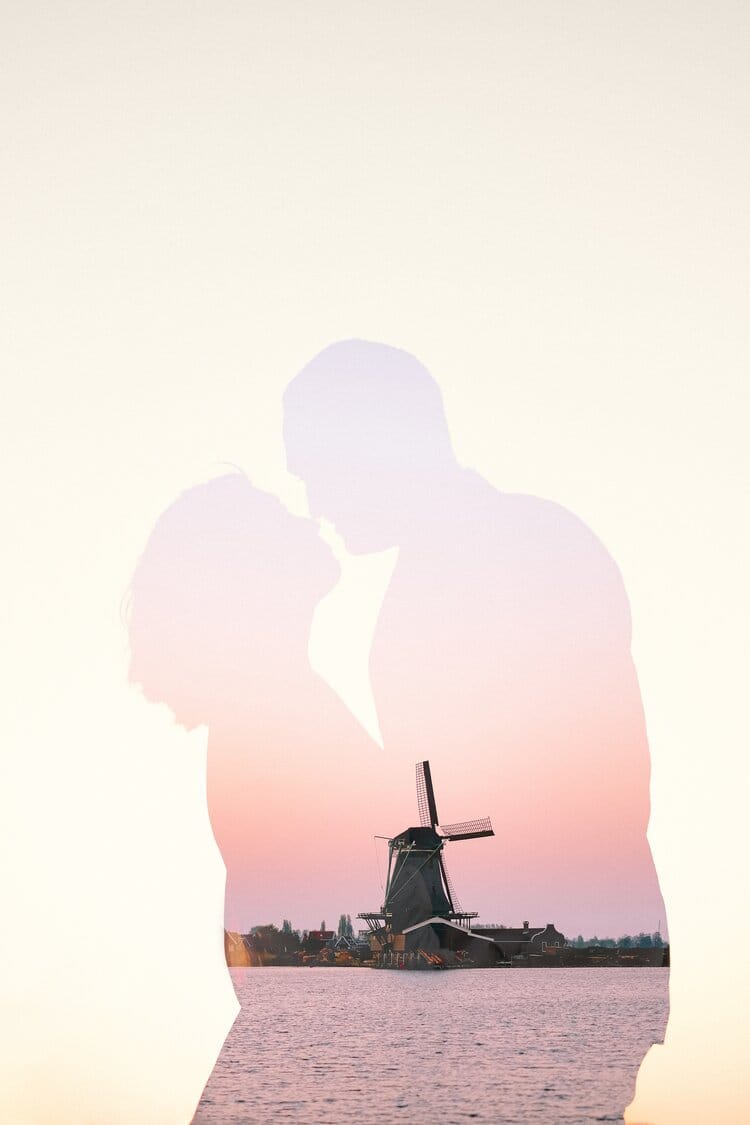
Josh and Korey, the shoot that changed everything; and Cindy and Blake, one of my favorite couples (because they had the patience for prisming and double exposures)
And suddenly, it was 2020.
When the pandemic began, photography was no longer possible, at least not the paid kind. In March of 2020, I had five events lined up to photograph. Only two of them actually happened.
I sat at my desk, surrounded by hard drives upon hard drives full of unedited raws, and realized that, since nothing was content anymore, I'd only been finalizing the images I was paid for.
What started as a hobby to get me out of the house and capture memories had, for the past couple of years, only been serving an algorithm I had no control over.
The even worse realization? I didn’t even know how to judge a good photo anymore. My only metric was whether it would perform well on Instagram.
And so I stopped taking photos and started pursuing music instead.
You can still hire me!
Ever since the lockdowns have passed, I have been photographing events - from conferences and symposiums to art exhibitions - several times a year.
But on a personal level, mending my relationship with photography takes time. And I'm not sure we're there yet.
In 2022, I rediscovered analog photography. The cameras I sold for like twenty euros a pop a decade ago were now costing me hundreds. But the tactility of film and a resurgence of really good photo labs had made shooting fun again.
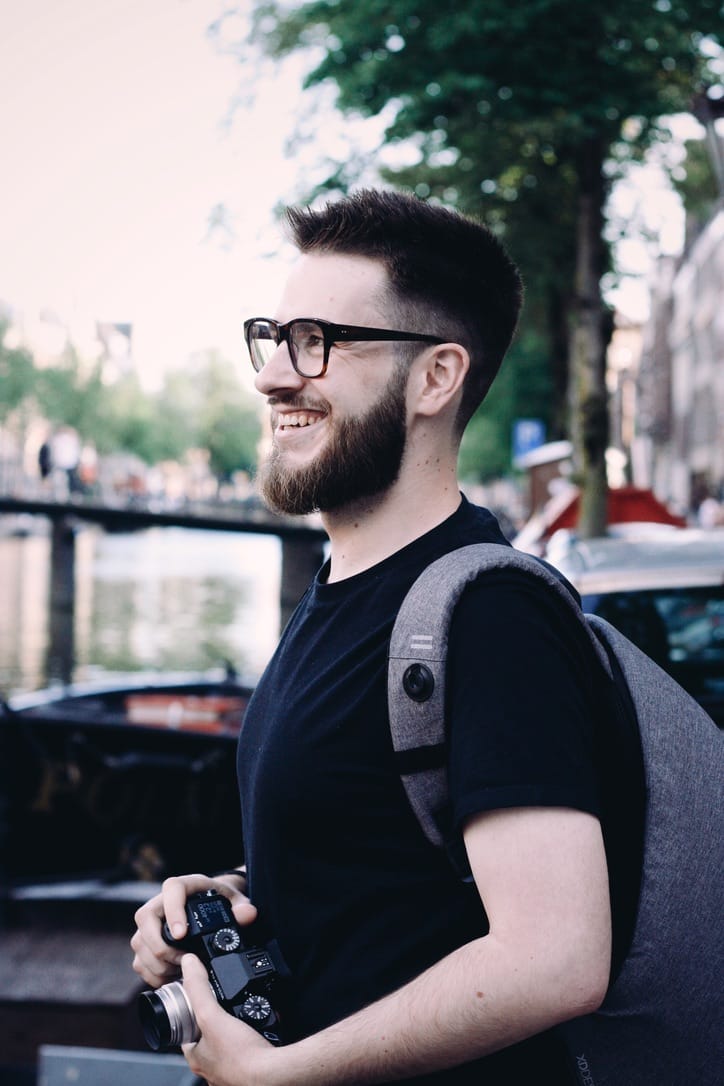
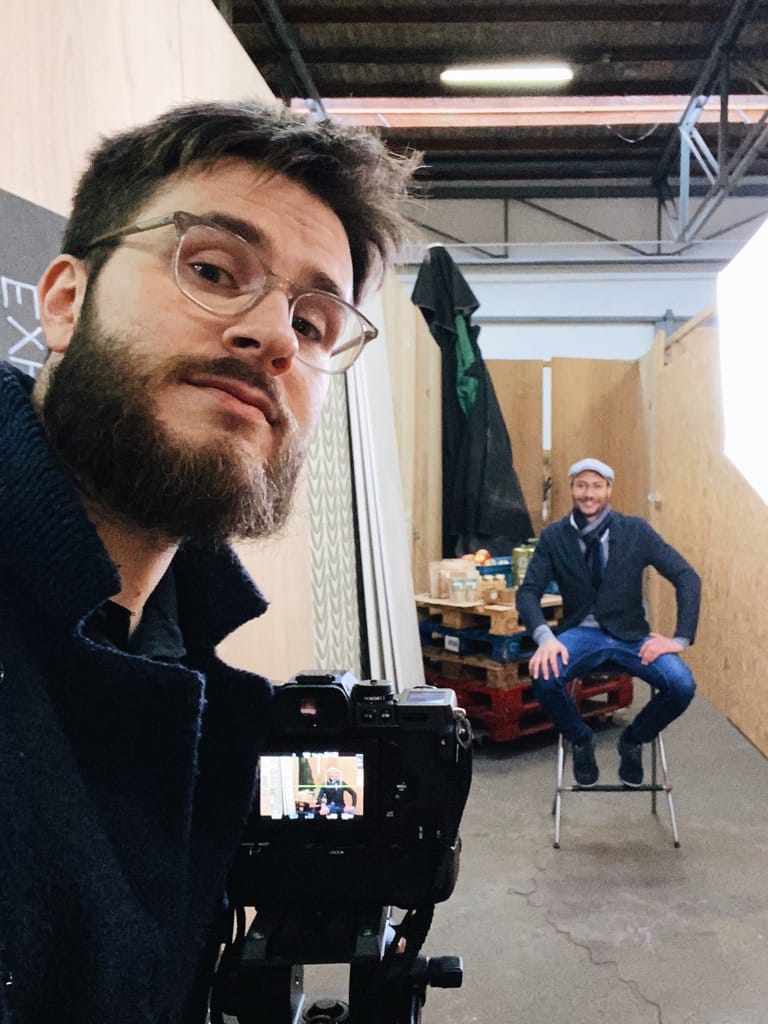
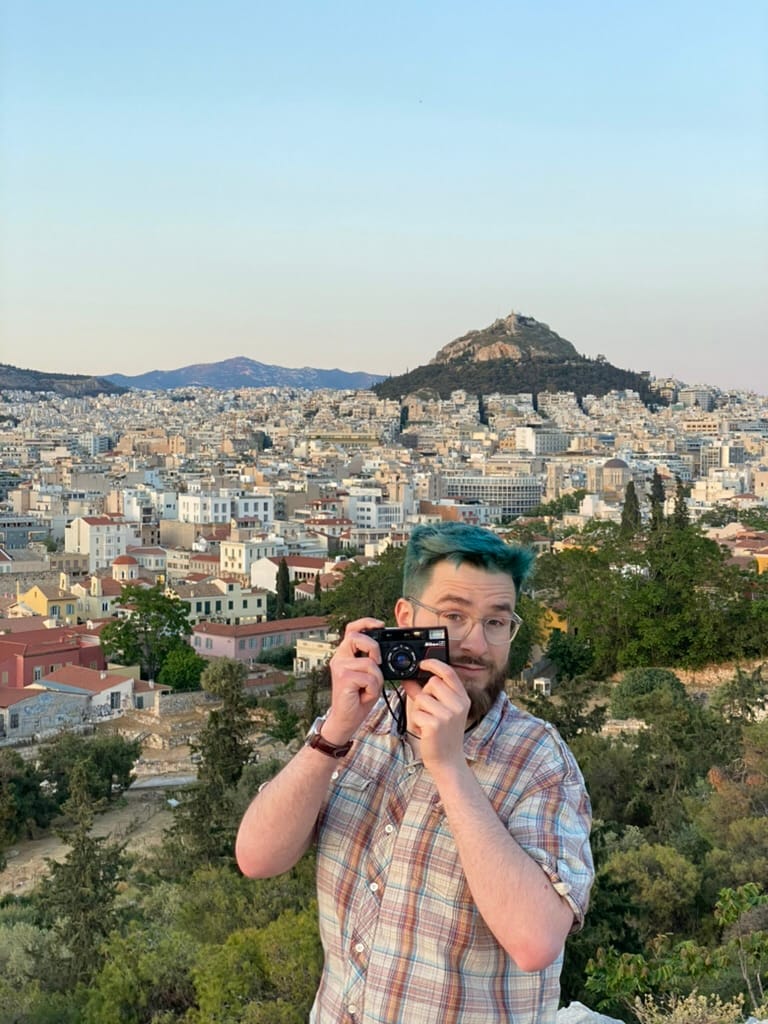
In 2019, during a canal photo walk; in 2020, filming a video course for A City Made By People; in 2022, with my mid-life crisis hair and my mid-life crisis camera in Greece
Four Kodak price hikes later, I also talked myself into getting a small digital everyday carry camera. I also started shooting - gasp - JPEG! Because sometimes, photographs are just memories.
Where to post photos in 2025?
Although you may have landed on this blog post because you follow me on Instagram, you probably know I very rarely post there nowadays. I'm tired of training the algorithm, and I'm not a strong enough person to not let my like count determine the course of my day.
Photographers seem to be leaving Instagram lately, anyway. And there are a couple of alternatives! Flickr has become relevant again, although many have proclaimed it dead many times over the past ten years. A newcomer, called Foto, is building their platform in public through donation-supported beta access.
I'm on Glass, which kind of looks like Flickr, if it were made today. It's a paid platform, which means that you are not the product. It also means it's not backed by a VC fund! Oh, and there are no like and subscriber counts. As a result, photography on Glass comes in many different flavors. Here's my profile.
As for social media, well, I'm still there. But these days, I want them to be a place where I go to talk about my projects outside of them, instead of treating social media as projects.
And where do you post your photos nowadays?